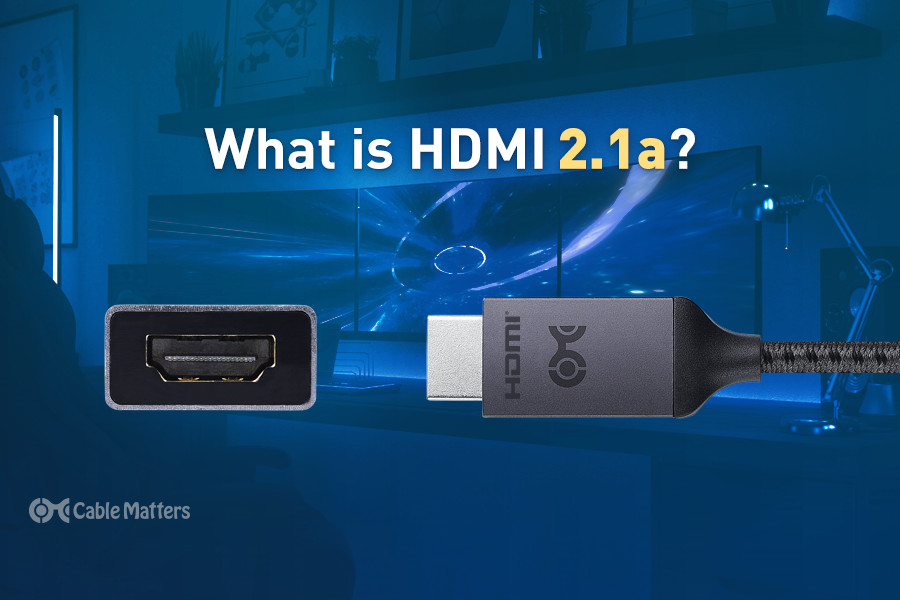
HDMI 2.1a is the next iteration of the HDMI standard, and though it doesn’t introduce a major upgrade in bandwidth like HDMI 2.0 and 2.1 did, it does bring with it a unique technology that may make it something worth upgrading for: source based tone mapping. This is an intriguing new addition to the HDMI toolkit, and though it will be predominantly useful for gamers and PC users working with SDR and HDR content simultaneously, there are a number of other niche use cases which make HDMI 2.1a exciting. HDMI 2.1a also includes a new power management feature called HDMI Cable Power, which is intended to better support very long HDMI cables.
What is source based tone mapping?
Source based tone mapping, or SBTM, is an overhaul to the way displays and media source devices handle tone mapping – or the dynamically adjusting of various values that affect the picture you see to deliver the most accurate possible picture. Traditionally, tone mapping is handled by the display, letting it receive meta data from the source device, be it a streaming stick, console, or Blu-ray player, and tweaking contrast, saturation, and brightness to deliver the best looking picture possible, even if it goes outside the bounds of what that TV is actually capable of. The display simply makes a calculation based on the information it received and what it can manage, and does the best job it can to display an accurate image.
However, in some instances, particularly when SDR and HDR content are viewable on screen at the same time – say on a streaming service home screen where SDR thumbnails and HDR trailers might be visible at the same time – it can be difficult for a display to know how to handle the tone mapping data it receives, which can result in visual hiccups and inaccuracies, like making SDR content look dull, or HDR content excessively vibrant.
SBTM tries to do away with that problem by allowing the source device to instruct the display how to handle the tone mapping based on the content it’s receiving. That should prevent rapid changes in tone mapping as you scroll through content.
That’s not to say that SBTM will necessarily be better than traditional display-driven tone mapping in all cases. Some devices, like the Nvidia Shield, or Apple TV, have much greater processing power than lightweight streaming devices, like Roku and Fire TV sticks. There are also high-end TVs with fantastic onboard processors which do a great job of dynamic tone mapping already. If you use a weaker streaming device, or have a high-end TV, display driven tone mapping may be a better solution for you if it’s not a problem you come across.
With that in mind, the real winners of SBTM, will be gamers. Not only will their consoles and PCs have more than enough power to handle the processing of SBTM, but they stand to benefit the most from its implementation, too. As it stands, game developers spend a lot of time trying to make it so that their games look great on all sorts of different displays, but there are always niche cases within the game that result in washed out pictures, or overly dark scenes – especially when transitioning from light to dark and vice versa.
SBTM should make it so that the developers have more control over how the game is perceived, removing those cases where the image quality is degraded because of a displays’ misguided tone mapping attempts. It also removes the potential for imbalances in competitive play, where a gamer with a better monitor might end up with a more visible image than someone with a cheaper display. While refresh rate and frame rate imbalances will continue to offer those with greater budgets a competitive advantage, source based tone mapping can at least offer some measure of narrowing that gap between the haves and the have nots.
What is HDMI Cable Power?
HDMI Cable Power is another exciting new feature coming to HDMI 2.1a. This feature is used exclusively for longer “active” HDMI cables – that is, cables that have built-in processors for boosting an HDMI signal across a very long cable length. Currently, some long active HDMI 2.1 cables are powered through an external power cable – typically USB Micro-B – because the HDMI port cannot provide enough power to both carry the signal and power the cable’s built-in chipset. HDMI Cable Power will allow your television to sense an active HDMI cable is connected and provide adequate power directly through the HDMI port, eliminating the need for a separate power cable.
What do you need to use HDMI 2.1a?
Unlike HDMI 2.1, HDMI 2.1a won’t need you to upgrade your devices or your standard passive cables to make use of it or source based tone mapping. Instead, HDMI 2.1a is likely to be enabled via a firmware update to existing HDMI 2.1 devices. That will leave you at the mercy of display and device manufacturers who wish to make the upgrade available to existing customers, but with SBTM’s potential to improve gaming and some media viewing, it would be short-sighted for display and device manufacturers to fail to offer it as a feature, at least on flagship products.
This means that your existing short HDMI 2.1 cables should work just fine for HDMI 2.1a. There aren’t currently any supporting devices or displays, but with HDMI 2.1a now a fully ratified and released standard, that is likely to change in the not-too-distant future. It’s probably that we’ll start to see devices shipping with HDMI 2.1a as standard later this year or early 2023, touting source based tone mapping as a major feature, too.
For active HDMI cables, things are tricky. To use HDMI Cable Power, your active HDMI cable and HDMI source device will need to support the feature. Active HDMI cables will still include an extra power port to provide backward compatibility with televisions that don’t support this feature yet.